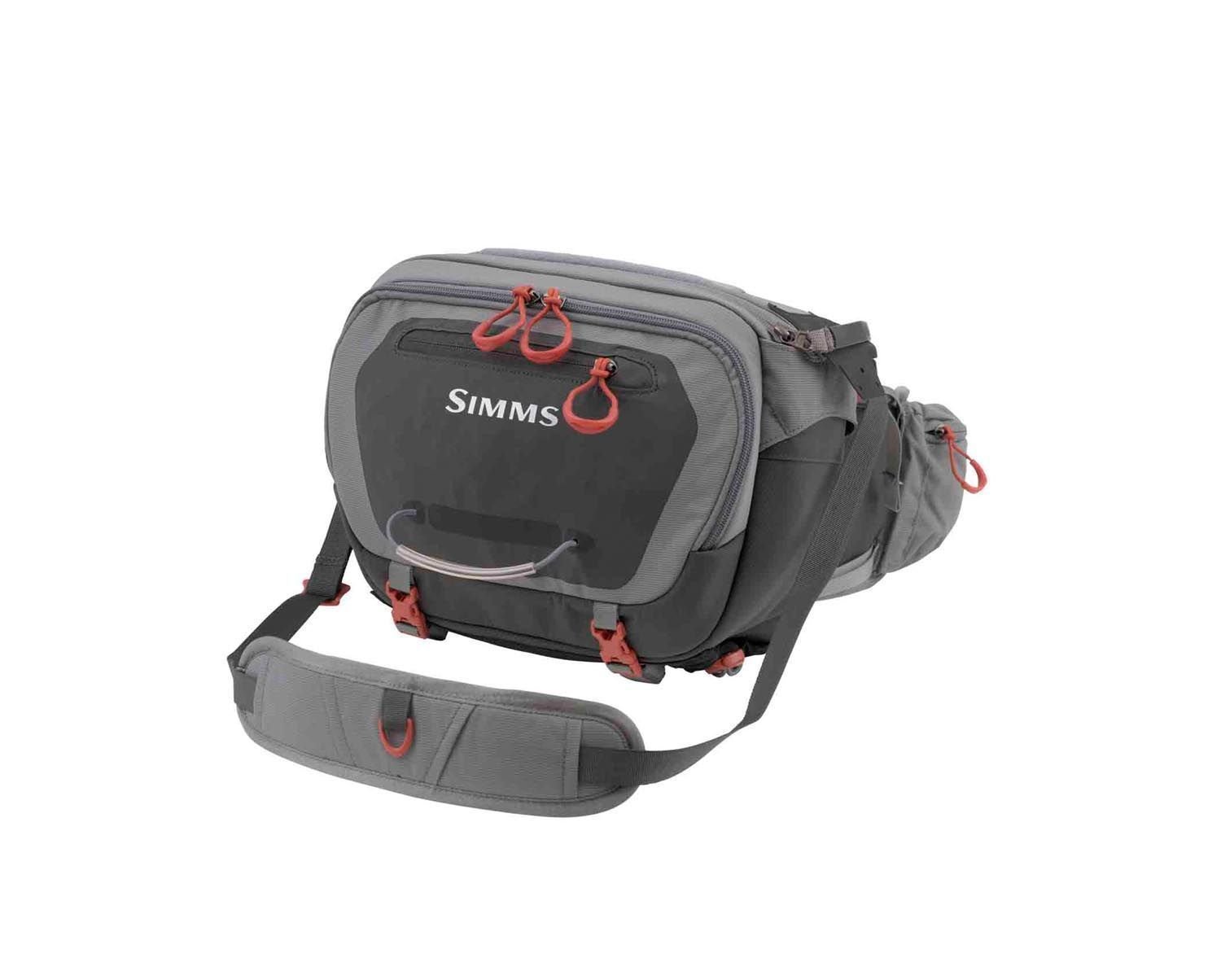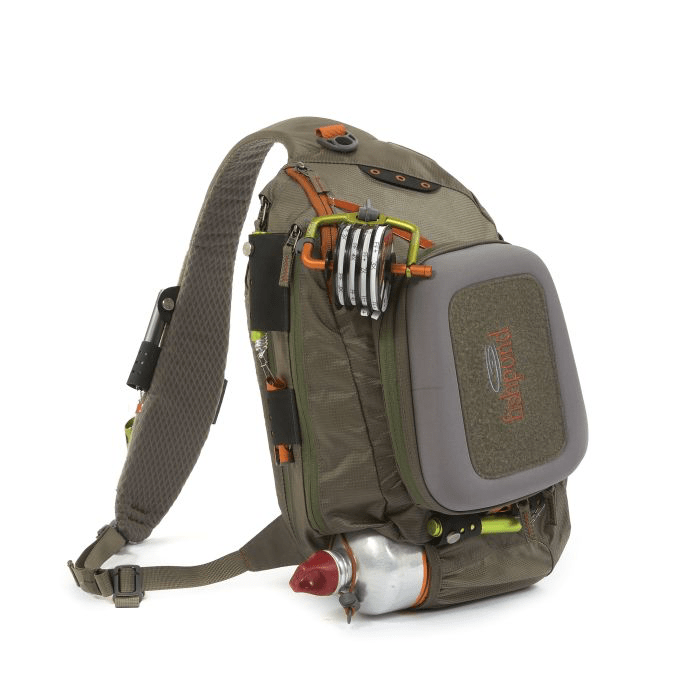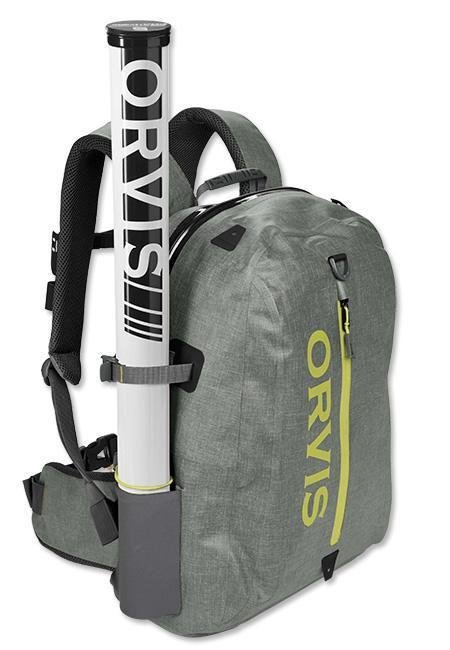How to Choose a Fishing Pack
When you first get into fly fishing, there are certain pieces of gear that are a top priority. These include the rod, reel, line, and flies. You really can't go fly fishing unless you have them. Once you have the basics, you get into the next tier: things that aren't an absolute requirement, but are nearly so just because of their usefulness. I would classify a fishing pack as one of these items.
A fishing pack (or fish pack, fly pack, or just pack) is where you store almost everything you bring on the water. Some are bare-bones, only providing enough space for a few flies and small accessories. Others are big enough to carry layers of clothing and serious camera equipment.
The pack you choose depends almost entirely on personal preference. Yes, some packs will obviously be better-built and more durable than others, but for the most part, if you go for a reputable fly fishing brand, all packs will be high-quality enough for the average angler. At that point, it comes down to the style, fit, and features you want.
Here, I'll cover some common styles and features to consider when choosing your next fishing pack.
Style
We'll start with style because I think that's where most people will start when it comes to identifying what they want in a pack. This is not an exhaustive list, as some companies make very unique packs to cover niche situations and preferences. However, a handful of styles will probably cover 90% of packs being used on the water, so I'll cover those here.
Hip/waist/lumbar pack
This is probably the most common style of fly fishing pack on the market. This style sits at the waist with a hip belt, and often has an optional shoulder sling to give some extra support. With the sling on, the pack usually sits either on the left or right hip of the angler, and without the sling, the pack can be rotated to sit either on a hip, or on the front or back of the waist. There are usually one to three main compartments, with more pockets inside for organization. Many also have a water bottle holder, a place for a net, and areas to hang accessories.
Pros of a hip pack
Versatile - several ways to wear
Extremely easily accessed without removing pack
Comfortable
Cons of a hip pack
Fly line can easily get caught on it in any position but fully behind the waist
Often a more cubic shape, so when filled, can start to sag outward
Not as much space as a sling or backpack
Sits low, easily submerged while wading
Sling pack
The sling pack is probably pretty close to the hip pack in terms of popularity. I like to think of the sling pack as a happy medium between the backpack (below) and the hip pack. Slings usually have more carrying capacity than a hip pack (but not as much as a backpack), and they're more accessible than a backpack while on the water (but not as accessible as a hip pack). The sling sits on the back while fishing, but can be swung around under the armpit to get into compartments while still wearing it. Slings usually have one or two main compartments with a handful of other inner and outer pockets for organization. Some have water bottle holders, and most have a place to store your net. The strap that sits on the chest usually also has places to hang accessories.
Pros of a sling pack
Usually enough space to bring extra layers, food, or a camera
Completely out of the way while fishing
Easily accessed without removing pack
Sits relatively high on the body, harder to submerge
Cons of a sling pack
Accessories on the chest strap and accessories on the pack itself cannot be accessed at the same time
Not versatile - must be worn a single way
Can sometimes cause a dull ache in the shoulder it's on, when packed full
Backpack
Most fishermen I know do not use a backpack-style fishing pack. This doesn't mean backpacks aren't worth looking into, but they serve specific purposes that the typical angler won't need on any given day. It's fairly easy to see what you're getting into with a backpack. The obvious selling point is space, while sacrificing accessibility. Many feature the things you'd expect in a backpack: water bottle holders, hip pockets, etc.
Pros of a backpack
By far the most space - can pack everything you'll need to carry for the day (or waders if you're hiking in for a while)
Completely out of the way while fishing
Cons of a backpack
Cumbersome if you don't actually need the extra space
Difficult to access without removing pack
Not versatile - must be worn a single way
Chest pack
Chest packs don't hide what they are: a pack that sits directly on the chest. These packs are often a bit smaller on average than the other styles, which could be what you're looking for, or looking to avoid, in a pack. Many have places to store accessories on the outside and nets on the back, but it's harder to find things like a place to store a water bottle.
Fishpond Cross-Current Chest Pack
Pros of a chest pack
Very compact and efficient, not cumbersome
Sits very high on the body, difficult to submerge
Extremely easy to access while fishing
Comfortable
Cons of a chest pack
Not versatile - must be worn a single way
Very little space
One more note about chest packs and backpacks: sometimes they are combined into a single unit, where you have a backpack on the back and a chest pack on the front. This is not a common setup among most anglers, but if you're considering it, you can use the info above to decide the pros and cons of such a setup.
Vest
Though not really a "pack" per se, many of the companies that make fishing packs also make technical vests that offer similar features and materials as the packs. Vests are somewhat in a category of their own since they're quite different from actual packs. Nevertheless, some folks may like the idea of a vest so here are some considerations.
Fishpond Upstream Tech Vest-Mens
Pros of a vest
Comfortable
Extremely easy to access while fishing
Sits high on the body, harder to submerge
Cons of a vest
Hard to carry large items or water bottles
Can be "too organized," if there are many small pockets instead of a few large compartments
Can get in the way of arms hanging down
Features
Once you have a style nailed down, the next thing to think about is the features you want in a fishing pack. There are seemingly endless features offered by different companies, and you may find packs with specs not listed here.
At the end of the day, though, there are a few big ones that most people take into consideration when narrowing down their options.
Waterproofing
Many companies offer a few fully-waterproof packs. The benefit of this feature is clear: your stuff will stay dry. This is obviously a desirable feature for anyone carrying around electronics or other sensitive items. There are downsides though. The most noticeable is cost. Fully submersible packs are significantly more expensive than non-waterproof packs. Another downside is that to be fully waterproof, packs have to be pretty bare-bones on the outside and have heavy-duty zippers that are a pain to open.
Organization
Like waterproofing, organization isn't an inherently good or bad thing. As I mentioned above, I tend to think that vests can be too organized. They're made up of multiple small pockets instead of a few large compartments. On the other hand, some (especially waterproof) lumbar packs are nothing but one big compartment, which can be equally annoying. If you enjoy tons of pockets and organization, keep an eye out for that when shopping for a pack. If, on the other hand, you're overwhelmed by too much organization, opt for a pack that consists of one or two main compartments with a handful of pockets scattered around.
Compatibility with fishing accessories and other items
Most anglers like to carry plenty of accessories when they fish. These include nippers, hemostats, floatant, tippet, split shot, and more. You'll want to keep in mind what you specifically use when choosing a pack. Having the things you use often very accessible is an important feature for a pack. Try the pack on and think about where you'd naturally reach for your tippet, floatant, etc. If the pack has a place there for you to store it, it may be worth considering. Additionally, think about whether you value having a water bottle and a net with you. Both of these things are commonly catered to on packs, but not always. If you always bring water but the pack has nowhere to put it, you'll quickly get annoyed with your decision.
Suggestions by angler "type"
Still lost? Here are a few specific suggestions on what you might want in a fishing pack, based on how you like to fish.
The photographer
If your main focus on the water is to get amazing photos of your own adventures, or of your buddies fishing, a fully submersible sling, hip, or backpack is probably what you want. The style will be based both on personal preference of fit and on how much gear you'll be bringing. While fully submersible can sometimes be annoying for doing a lot of fishing (due to difficult zippers and lack of quick-access outside features), they're great for someone who has precious equipment and no need for easy-to-reach nippers.
The scientific angler
By that I mean, the person who constantly makes tiny tweaks to their rig every few casts in search of the perfect setup. They'll change flies, weight, indicator, etc. many times during an outing. The priority here will be something that's very easy to access, while also having enough room to carry all your fly boxes and other trinkets. For this, a hip pack with plenty of outside attachment areas might be best. The hip pack provides plenty of room for all your flies and easy access at all times. Unless you need to carry something damage-prone, I'd skip the waterproofing in favor of having more options for attaching accessories like nippers, hemostats, and floatant to the outside in opportune spots.
The "everything-but-the-kitchen-sink" angler
This is the person who wants to bring everything they own when they fish. A full lunch, a 6-pack of beer, multiple layers, a camera, supplies for their dog, you name it. Obviously, the type of pack will depend on how much the person truly wants to bring, but this is when a backpack might make sense. Whether it's waterproof will depend on what's inside the backpack.
The efficient angler
This person may have 30 minutes to fish on their way home from work, or wants to take a quick walk through the park to fish a local bass pond. They aren't worried about bringing any food or extra clothing, because they aren't going to be fishing long anyway. In this case, there's no need to haul around a cumbersome fishing pack. A minimalist, non-waterproof chest pack is perfect. It's lightweight, compact, and hassle-free.
The generalist
Most people will fall into the generalist category. They probably fish a handful of times per month, usually for an afternoon (or a full day near the car), and carry a normal amount of stuff with them. A bottle of water, a windbreaker, a sandwich, and their fishing equipment. Usually, this person will be happiest with a hip or sling pack, depending on how much space they want, and personal preference. Both of these styles are good all-around packs, so whichever fits the best and has the desired features is totally fine.





